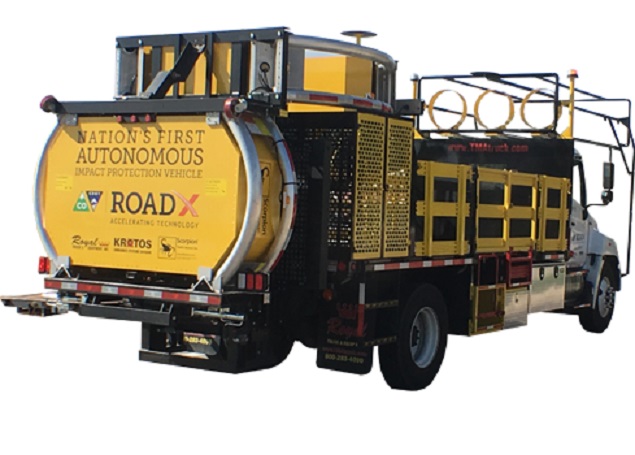This post is also available in:
 עברית (Hebrew)
עברית (Hebrew)
Highway work zones are a dangerous environment to work in. In the United States, there are more than 12 crash-related fatalities every week in the road work zone. By removing the human from the most dangerous assignment in mobile highway operations, a new system originally developed for the military has the potential to save nearly 700 lives annually.
The advanced autonomous vehicle system has been recently enlisted to make North Dakota’s highway roads safer for workers.
The Autonomous Truck-Mounted Attenuator (ATMA) is a driverless version of the mobile crash barriers utilized for road construction and highway maintenance vehicles, shielding workers and equipment ahead from errant drivers entering the work zone.
Truck-mounted attenuators, crash protection systems attached to the rear of trucks, have been in use in North Dakota for a while, but require someone behind the wheel. When another vehicle crashes into them, that driver can be injured.
The crash-protection prototype will be operated on the Interstate 29 corridor in 2021. If the test proves successful, the North Dakota Department of Transportation will aim to acquire more of the systems.
The technology was developed by Kratos Defense & Security Systems, which specializes in unmanned systems, in partnership with Royal Truck & Equipment. Kratos’ primary focus is on enhancing safety for fighting wars. But this is an area where the now mature technologies used to convert military convoy vehicles into unmanned systems can be repurposed, helping to protect slow-moving road sweeping and line striping vehicles and their occupants.
The pilot crash-protection project was made possible by a $241,687 grant from the US Federal Highway Administration, according to thedickinsonpress.com.


























